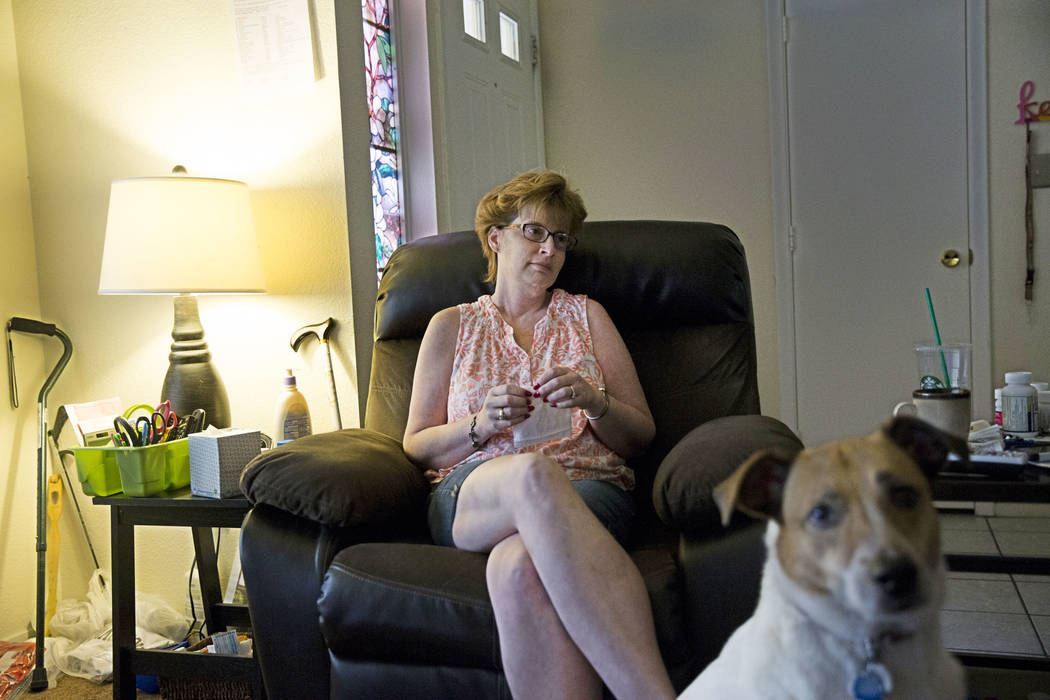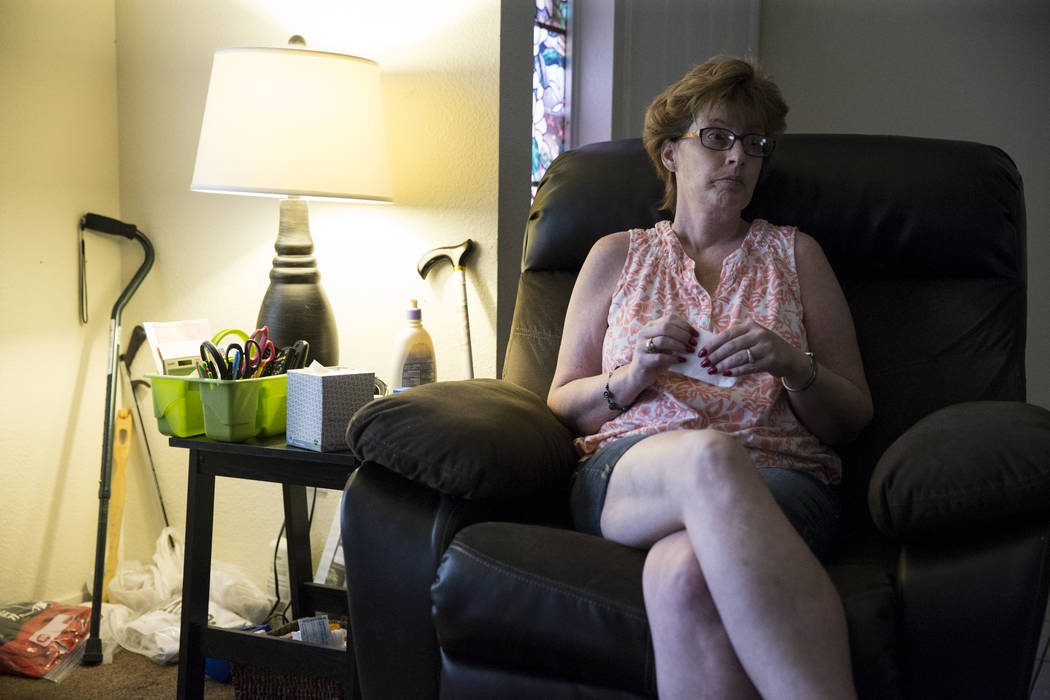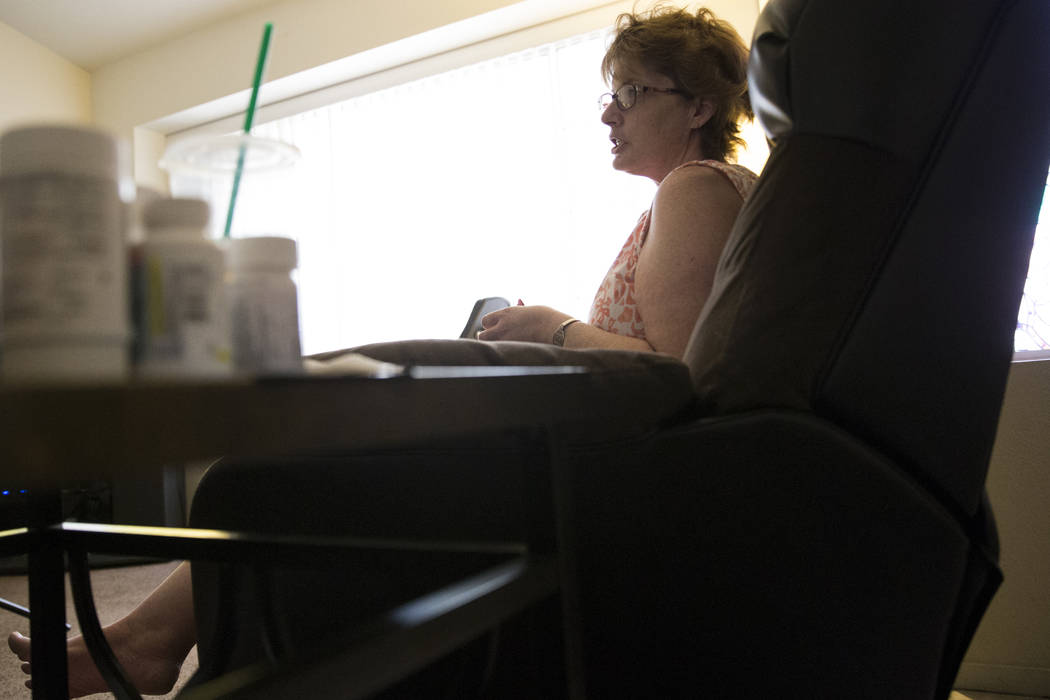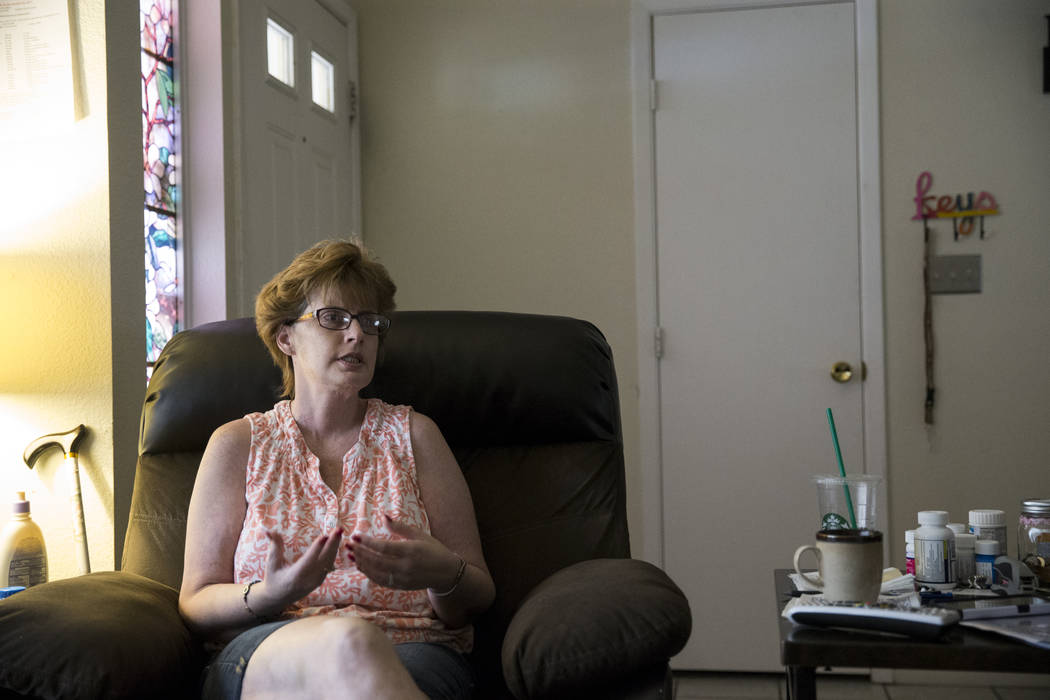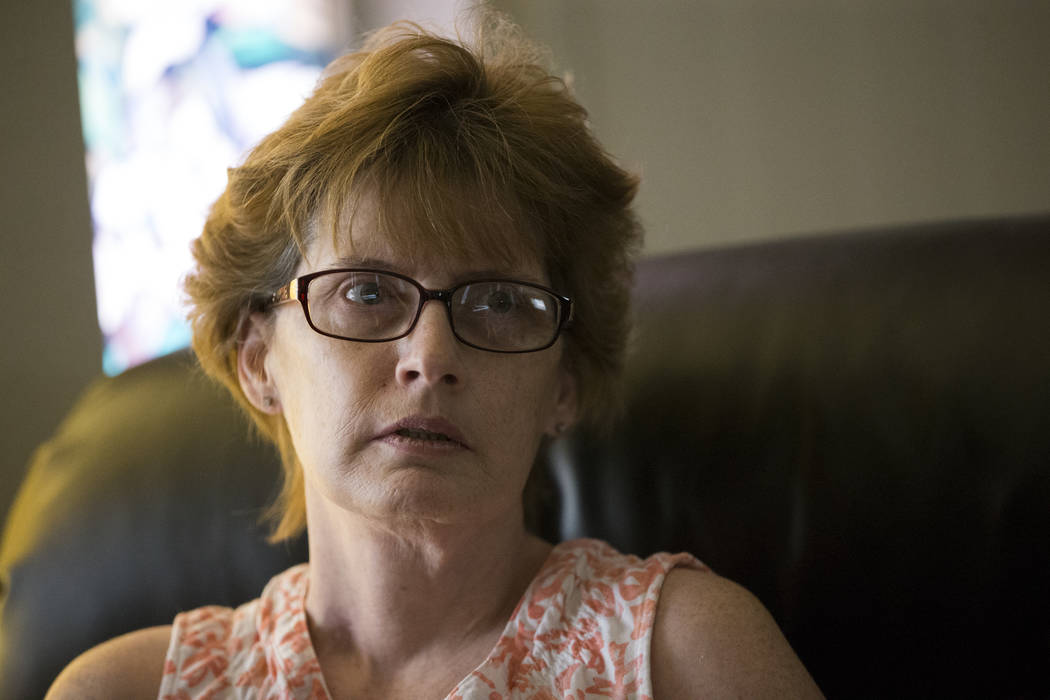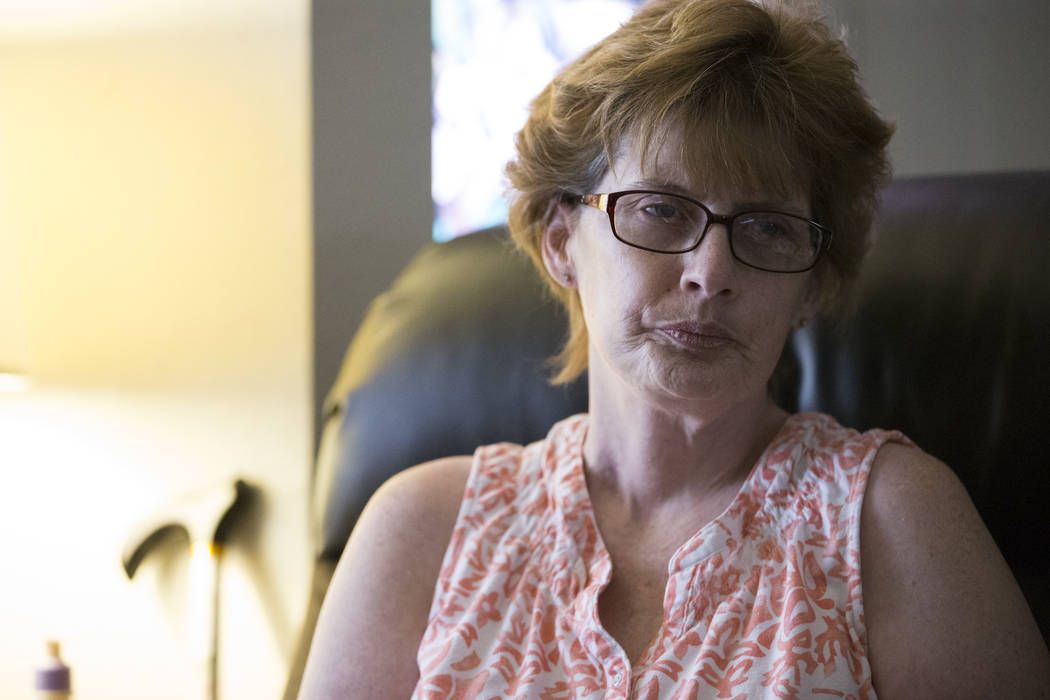Nevada patients with chronic pain agonize over new opioid rules
Debbie Soto loves line dancing.
At least she did, before her multiple sclerosis, fibromyalgia and epilepsy triggered regular bouts of intense pain.
What began as a tingling sensation in her fingers crept over her skin and and grew steadily worse as it progressed through her body. Now it is so profound on some days that a hug is out of the question.
“It’s like a death,” Soto, 47, said of her condition. “Each time you lose an ability or a new symptom comes up … you have to mourn it.”
There is one thing that gives Soto some measure of normalcy: opioids. But that option is becoming increasingly problematic because of a new law intended to prevent the abuse of powerful painkillers like OxyContin, Vicodin and fentanyl.
Legislators, health officials and drug abuse experts see overprescription by medical professionals as the primary reason for the nation’s opioid epidemic. To fight back, they are pushing increased restrictions on doctors to curtail the scourge that is killing 91 Americans a day by overdoses, according to the Centers for Disease Control and Prevention.
Public health tug-of-war
Patients like Soto with chronic pain are caught in the middle of the public health tug-of-war. A 2011 Institute of Medicine report estimated that 100 million American adults suffer from chronic pain, which costs the nation about $635 billion annually — more than heart disease, cancer and diabetes combined.
In Nevada, state regulations allow pharmacists to deny prescriptions if they believe they are unlawful or fraudulent, could harm the patient or are not for a legitimate medical purpose, said Larry Pinson, executive secretary of the Nevada State Board of Pharmacy.
In the case of opioids, the refusal to fill a prescription usually occurs if someone suspects a doctor is overprescribing or if the patient appears to be “doctor shopping” to keep the meds flowing.
A new law that will take effect Jan. 1 will add numerous restrictions on long-term opioid prescriptions, so many that some doctors who specialize in treating pain fear it will likely drive practitioners out of the state and leave patients like Soto in the lurch.
Dr. James Marx, a Las Vegas pain specialist, notes that in his 25 years of practice he’s never had a patient overdose on opioids. And he predicts that problems with illegal painkillers will grow as legitimate drugs are withheld from patients.
“The illegal market will step up to the plate,” he said.
Marx already bristles at the law allowing pharmacists to refuse to fill prescriptions, saying it leads to arbitrary decisions based on snap judgments.
“It’s not based on a clinical evaluation of the patient,” Marx said. “They now have a ‘one size fits all’ mentality when it comes to opioids. Some pharmacists have come to the point that patients should not be on any, that any amount is too much.”
Doc: Pharmacies withhold relief
He said the problem has grown worse over the last decade as awareness of opioid abuse had grown. On occasion, he said, he’s spent an hour on the phone explaining why a patient needs the medication only to have the pharmacist still decline.
“He’ll just say he’s not comfortable filling the prescription,” Marx said.
Pinson, the Nevada Board of Pharmacy official, counters that a second level of defense is needed to curtail the widespread abuse of opioids and that the law requires a pharmacist who refuses to fill a prescription to contact the physician to ensure that deserving patients aren’t denied medication.
“They’re worried about making sure the prescription is for legitimate, medical reasons,” he said. “And it makes for a real difficult spot for these guys.”
The new law, proposed by Nevada Gov. Brian Sandoval and passed unanimously by the Legislature this year as Assembly Bill 474, will go much further.
It mandates that doctors conduct mental health evaluations before prescribing painkillers to patients for the first time and limits initial prescriptions to 14 days for acute pain.
If prescribing for more than 30 days, doctors will be required to consider 16 factors, including how many times the patient attempted to get the drug or claimed to have lost it, whether the patient might be doctor shopping and if the treatment is working as expected. They also will need to define treatment goals with the patient — what the law calls a “medication agreement with the patient.”
Patients also have their own requirements, including random urine testing and counts of their medications.
Tests required after 90 days
After 90 days, the regulations get even more stringent. Patients have to complete an abuse assessment and undergo blood and radiology tests to try to pinpoint the cause of the pain.
Doctors also must at that point meet in-person with the patient, consider referring the patient to a specialist and write up another treatment plan.
At a Sept. 25 meeting in Carson City of the state opioid task force formed by Sandoval, Nevada Chief Medical Officer John DiMuro promised the law would not handcuff providers. The state and Clark County medical societies also have endorsed it.
But some in the medical community say the requirements are so cumbersome that doctors will be reluctant to prescribe long-term pain medications and deny relief to deserving patients.
“Doctors will just not find it feasible to do all this monitoring to treat a patient,” Dr. Ivan Goldsmith, a Las Vegas internist, said in an email. “Doctors will flee Nevada.”
Marx, the pain specialist, said he started counseling patients several years ago that there would come a time when they would have a difficult time getting proper dosages of pain medication. That time may now have arrived, he fears.
Soto, who lives in near-constant pain and winces even when she shifts in her chair, said she understands the concerns about painkiller abuse.
The first pain doctor Soto visited treated opioids carelessly, she said. He sent her home with fentanyl patches, Percocet and morphine in doses that another doctor later said could have killed her.
Treated like a ‘drug addict’
But she fears that the new law doesn’t distinguish between those who take opioids because they need them and those who use the drug to get high.
In order to keep her current prescription, for example, Soto must see her doctor regularly. And her last pain physician required her to pass a bimonthly urine test.
“It makes me feel like some drug addict,” she said.
She fears the new restrictions will make it even harder – or impossible — to get the medicine she relies on to survive. She joined the advocacy group Indivisible Nevada in an effort to bring attention to the plight of patients with chronic pain.
“I feel like I’m screaming and yelling and nobody can hear me,” Soto said. “I understand that there are very serious problems with opioids and them leading to overdose, but there are those of us who need them and don’t abuse them.”
Contact Jessie Bekker at jbekker@reviewjournal.com or 702-380-4563. Follow @jessiebekks on Twitter. Contact Paul Harasim at pharasim@reviewjournal.com or 702-387-5273. Follow @paulharasim on Twitter.
Related
Opioid deaths in Nevada decline, but hospitalizations rise, data show
Sandoval considers solutions to opioid crisis in Nevada
Nevada gets $5.6 million to combat opioid abuse



